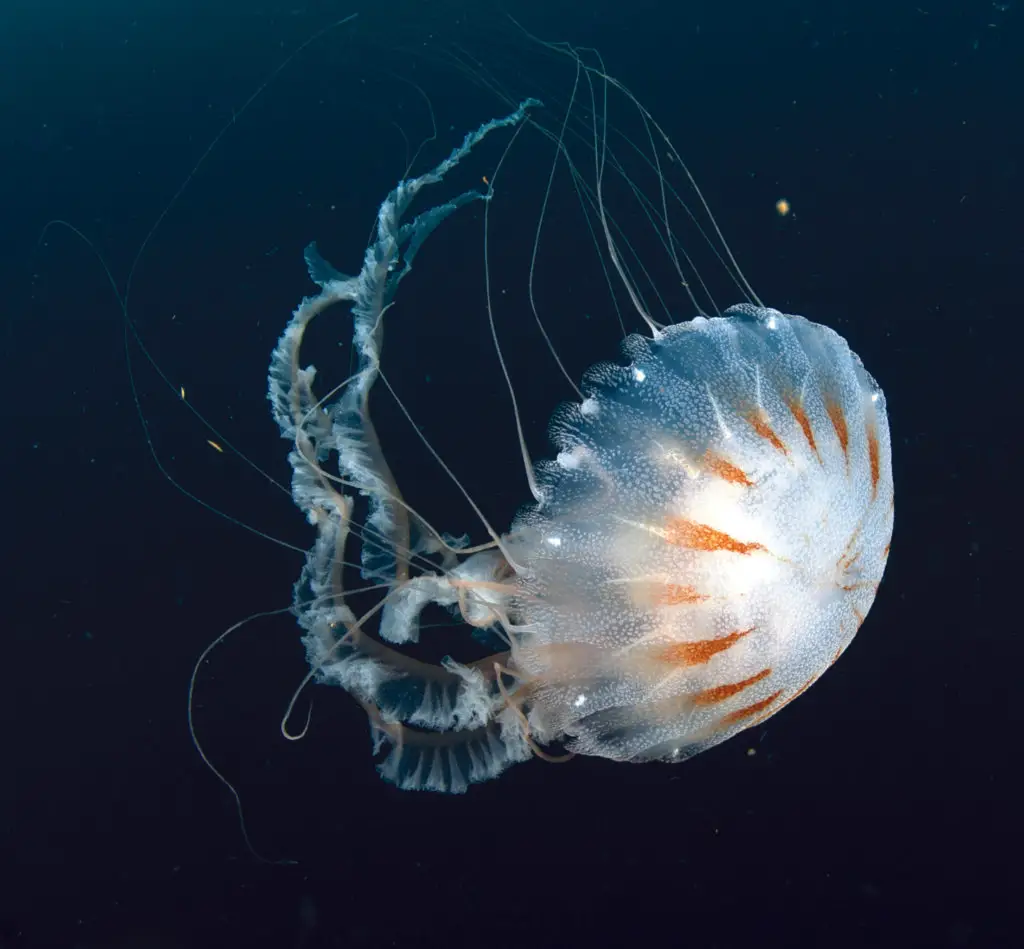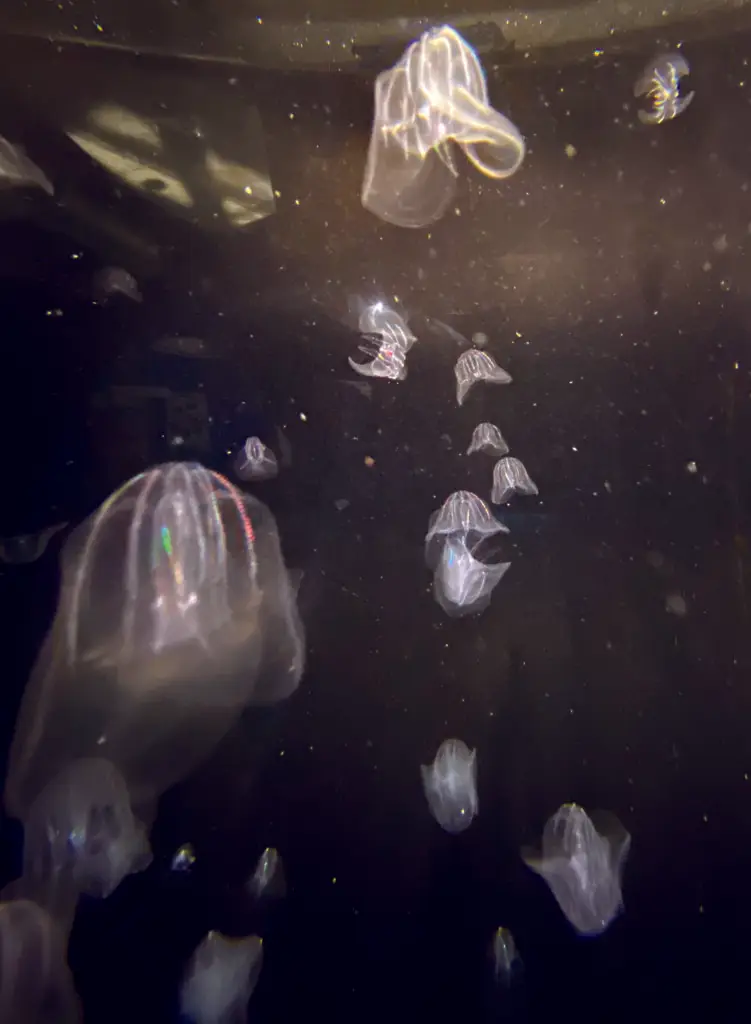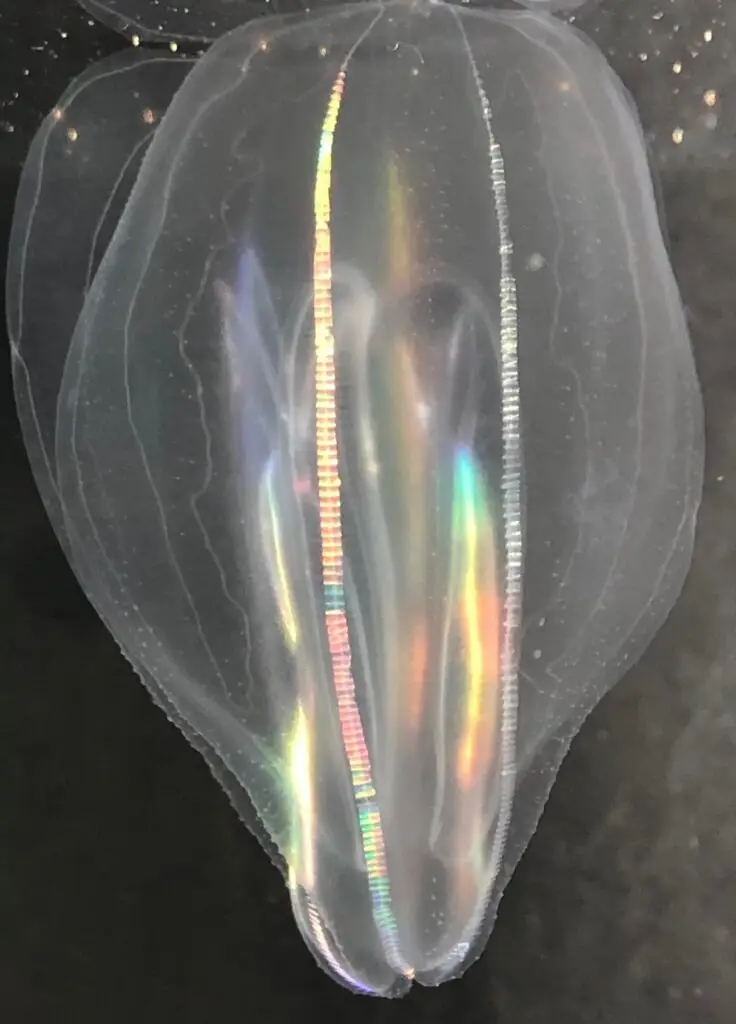By Emmett Burnett

In a book of Who’s Who of Alabama Animals, jellyfish claim the chapter, “Wonderfully Weird and Occasionally Wicked.” Few creatures pique one’s curiosity, evoke awe, and sting like the dickens, more than Alabama’s glob of distinction.
The Gulf Coast has more than 60 species of jellyfish. Most we never see, but some swim among us. Resembling something from “Star Wars,” nature’s Jell-O has changed little since prehistoric times. It is literally an aquatic dinosaur that survived.
Jellyfish have no brain, heart, or central nervous system. Under those conditions, a human would be dead on arrival, but for jellyfish? No problem.
What makes this animal a living being and not wet Play-Doh? We asked experts who refer to jellyfish as “jellies,” because a jellyfish is not a fish.
“There are many misconceptions about jellies,” says Dr. Anthony Moss, Auburn University associate professor and marine program coordinator. “Most people think jellies just float around but actually, many on the Alabama coastline are good swimmers.
“Some make sharp turns and maneuver tentacles in a manner that makes it more likely to trap prey – plankton and tiny fish,” he adds.

Most jellyfish swim the way jets fly, through propulsion. They suck water in their bodies and push it out, causing motion.
Pretty impressive for an aquatic existence void of cognitive thought. But what jellyfish lack in brains, they make up in nerves. In fact, we get on their nerves. It’s how they know we are there.
“We are still looking at how jellyfish think,” Dr. Moss says about the gelatinous mystery. “They don’t have a nervous system but they have a nerve bed, distributed through its entire body.
“The cells coordinate muscular contractions and access environmental conditions. Jellyfish are much more capable of sensing the environment than we used to think. They sense prey possibly through smell and vibrations in the water.”
And yes, most of Alabama’s memories of jellies are not pleasant. Their stings range from mildly annoying to, in rare cases, hospital care. But if jellyfish could discuss their stings, it would say, “Don’t blame me, blame my tentacles!” They are correct.
As head curator of the Alabama Aquarium at the Dauphin Island Sea Lab, Brian Jones knows jellyfish through research and personal experience. “Oh yeah, I’ve had a few stings in my day,” the curator smiles. He explains the animal’s thought process – or the lack thereof – during stinging.
Touch it, you’re stung
“Jellyfish stinging cells are embedded with tethered harpoons,” Jones says. “The cells are triggered by touch. If you rub against it, you are shot. The sting is a mechanical stimuli reaction. The jellyfish has no say in the matter – its nerve pad does.”
Once the barb is injected, a toxin is pumped through the tethered line into the jelly’s prey – small fish, larva, tiny crustaceans, or collegiate spring breakers. Hence the sting.
The good news is, once deployed, the tentacle / barb can be used only once, just like a honeybee’s stinger. The bad news is, unlike the honeybee’s stinger, a jellyfish has thousands of tentacle barbs, each locked and loaded.
Even if the tentacle is torn off and free floating – touch it, trigger it, you’re stung. Even if the jellyfish is washed ashore and dead, touch the nerve cells, and you are stung.
Fortunately a jellyfish sting typically wanes within an hour. First aid actions vary.

“I find one of the best treatments is first, pull the stinger from your skin. Usually your fingertip’s skin is too tough for the barb to penetrate,” notes Jones. “After the barb is out, submerge the wound in hot water. Heat breaks down the proteins in the venom.”
According to Auburn University, seven jellyfish are common on Alabama’s coastline: the sea nettle, moon jellyfish, cannonball, Portuguese man-of-war, oceanic jelly, sea wasp and mushroom jelly. But among the most common sightings is the comb jelly. It is cute, fascinating, and fake.
“People mistake comb jellies for jellyfish because comb jellies look like jellyfish and have similar lifestyles,” says Jones. “The neat thing about comb jellies (is) if you touch one, it glows bright blue-green. A chemical reaction in their translucent bodies produces light.”
As we gaze into the Alabama Aquarium’s tank filled with comb jellies resembling living lightbulbs, he continues, “People see comb jellies at night in the gulf, by the thousands. They look like stars in the water. It is an amazing sight.”
As for our Gulf Coast stingers, the sea nettle is most common. It grows to four inches in diameter and has 24 tentacles. “Sea nettles eat comb jellies,” says Dr. Moss, “but they have a nasty sting.” Recipients of the nettle’s wrath compare it to a wasp sting.
Moon jellyfish, though intimidating in size, as much as 18 inches in diameter, pack a milder punch. Humans stung note it as an annoying, itchy spot on the skin.
The cannonball jellyfish is so named because it is 10 inches in diameter and shaped like a cannonball. Though mildly venomous, it is mostly a nuisance for shrimp fishermen, clogging their nets.
But the bad boy of Gulf waters is aptly named: Portuguese man-of-war. “It has a bad attitude and a terrible sting,” warns Dr. Moss. It can sting through your clothes and can leave a permanent scar.”
The Portuguese man of war’s tentacles never stop growing. Their appendages can be – and this is not a typo – 100 feet long. With tentacles swaying in every direction, a person can be 30 feet or more away from the man of war, and still be stung.
“Babies and people with heart conditions are in the most danger,” warns Dr. Moss. “For most of us, the man-of-war is not life-threatening, but will sting with pain you will never forget.”
If you encounter one – a large purple to blue float, on the water’s surface – run, swim, whatever it takes, get away from it. Fortunately, the Portuguese menace is not as common as other jellyfish.
On the positive side, jellyfish are important to the environment. “Sea turtles love them,” adds Brian Jones. “Many fish eat them too. In addition, lots of jellyfish eat other jellyfish.”
In Asian countries, jellyfish are a delicacy but so far, not that popular here, but could be. There’s always room for Jell-O, but be sure to remove the stinger.

Ed. note: At presstime, the Alabama Aquarium was temporarily closed for renovations but was expected to reopen in early July. Check its website for the latest updates: disl.edu/aquarium




